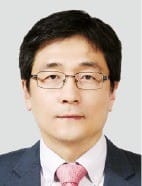Department News
Professor Byeng Dong Youn, presents predicted solution for Industrial facilities
Korean economy [New Frontier]<?xml:namespace prefix = "o" ns = "urn:schemas-microsoft-com:office:office" />
Bringing artificial intelligence technology to Big Data ...
Presenting industrial forecasting solution
SNU System Health and Risk Management Laboratory
.jpg)
The system health and risk management laboratory (Professor Byeng Dong Youn, photo) of Seoul National University is leading the technology of health management of industrial facilities (PHM: Prognostics and Health Management) based on measurement data obtained from industrial facilities. The lab has developed soundness prediction diagnostic technology for various industrial core facilities such as industrial robots, power generation facilities, railway vehicles, wind turbines, etc., and the technology has been successfully applied to various facilities.

Professor Byeng Dong Youn
In addition, the laboratory has been recognized as a global leader in equipment health prediction technology, winning several times at the World Data Challenge competition hosted by the IEEE. In recent years, it has been acknowledged for its superiority in technology, and developed 'GuardiOne', a diagnostic program for industrial facility health predictions, with the support of the Ministry of Information, Communication and Science. Currently, POSCO, SKT, LG, Schaeffler, and other global companies are providing diagnostic services for diagnosing facility health.
Recently, as part of the development of industry-academia cooperation technology, it is engaged in the business of "Diagnosis and prediction technology development of state of artificial intelligence - expert knowledge fusion substation facility" with KEPCO. The objective of this project is to develop an autonomic soundness prediction solution for substation facilities in the KEPCO substation and to develop advanced facility maintenance solutions by implementing the Cyber Physical System (CPS). In the case of substation facilities, there is no universal soundness management technology that can compensate for the difference between the substation structure and operating environment because it is difficult for the person to directly visit substation facilities to diagnose the condition.
The limitations of this existing technology can be overcome by utilizing advanced technology of the fourth industrial revolution represented by artificial intelligence, big data and so on. For example, the laboratory has used artificial intelligence to present predictive solutions for various industrial facilities. We plan to develop high-performance next-generation forecasting and management solution by integrating it with the big power substation equipment possessed by KEPCO. Especially, using artificial intelligence technology, the health of different substation facilities can be grasped autonomously, and the facility management can be realized immediately. It is expected that this will not only improve the reliability of KEPCO substation operation, but also greatly reduce the operation cost of substation operation.
Professor Youn said, "This project is very important because it presents a positive example of industry-university cooperation technology development through cutting-edge technology development and industrial application of the 4th industrial revolution." Through the achievements of this project, and applying predictive soundness diagnosis technology, it will be possible to achieve the fourth industrial revolution of power generation and power facilities."
Direct to article http://news.hankyung.com/article/2017122099311

